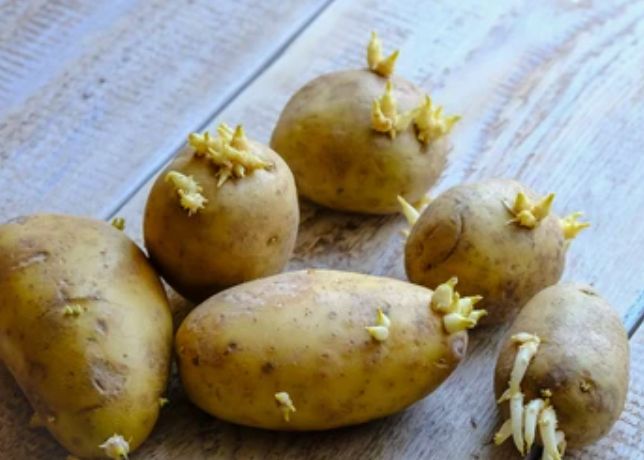
When potatoes are exposed to warmth and moisture, the eyes on the potato may begin to develop into sprouts. These sprouts can grow into stems and eventually produce leaves if left undisturbed.
Are Sprouted Potatoes Safe to Eat?
The short answer is yes, sprouted potatoes are generally safe to eat, but with some important caveats.
1. Removal of Sprouts and Eyes:
Before consuming sprouted potatoes, it’s essential to inspect them carefully. Remove any sprouts or eyes, as these parts can contain higher concentrations of a naturally occurring toxin called solanine. Solanine is a glycoalkaloid that can be harmful in large amounts. While small amounts of solanine are not typically dangerous, it can cause nausea, vomiting, and diarrhea if consumed in excess.
2. Greening:
In addition to sprouts and eyes, you should also watch out for green patches on the potato’s skin. This green coloration is a sign that the potato has been exposed to light and is producing higher levels of solanine. It’s best to cut away these green areas and discard them. The rest of the potato can usually be safely consumed.
3. Cooking:
Cooking potatoes, whether they are sprouted or not, can help reduce solanine levels further. Heat breaks down solanine, rendering it less toxic. Therefore, it’s advisable to cook sprouted potatoes thoroughly to minimize any potential health risks.
4. Sensitivity:
Some individuals may be more sensitive to solanine than others. If you have a low tolerance for solanine or are particularly concerned about the presence of this toxin, it may be best to avoid sprouted potatoes altogether.
5. Children and Pets:
It’s crucial to keep in mind that children and pets may be more susceptible to solanine poisoning than adults. For this reason, it’s a good practice to remove sprouted or green areas from potatoes when preparing meals for young children or pets.
How to Handle Sprouted Potatoes
If you discover sprouted potatoes in your kitchen, here are some steps to follow:
Inspect: Examine the potatoes carefully for sprouts, eyes, and green patches.
Remove Sprouts and Eyes: Use a knife or vegetable peeler to cut away any sprouts or eyes. Ensure you remove them entirely to minimize solanine content.
Discard Green Areas: If you find green patches, cut them out and discard them.
Cook Thoroughly: Cook the potatoes thoroughly to reduce the solanine levels further. Baking, boiling, or roasting are effective cooking methods.
Store Properly: To prevent sprouting, store potatoes in a cool, dark place with good ventilation. Avoid storing them in the refrigerator, as the cold temperatures can cause the starch in potatoes to convert to sugar.
Conclusion
In conclusion, sprouted potatoes are generally safe to eat, as long as you take the necessary precautions. Remove sprouts, eyes, and green areas, and cook them thoroughly to reduce any potential health risks associated with solanine. While sprouted potatoes may not taste as good as their fresh counterparts, they can still be used in various recipes, reducing food waste and saving you money. Just remember to use your best judgment and follow these guidelines to enjoy your potatoes safely.
